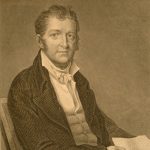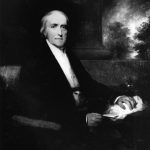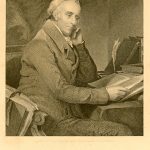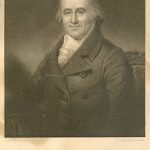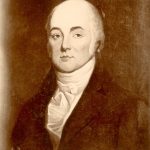MEDICAL SCHOOL ORGANIZATION AND CURRICULUM, 1791-1811
The Medical Department (or Medical School) as organized after the 1791 charter consisted of six chairs, each correponding to a speicific area of study, each taught by the professor elected by the trustees. Included were a professor and adjunct professor of anatomy, surgery and midwifery; a professor of materia medica (knowledge of substances used for healing, now known as pharmacology); a professor of chemistry; a professor of natural history and botany; a professor of the practice of physic (art of healing or of medicine); and a professor of the institutes and clinical medicine.
During the next two decades there were only a few changes in the organization of the medical curriculum. First the chair of the Institutes and Clinical Medicine was combined with the chair of Theory and Practice, and then the subject matter of botany and natural history were folded into materia medica, eliminating the chair of botany. In 1805 a chair was established for surgery alone, and in 1810 midwifery was given its own chair as well.
Until the union of the schools in 1791, two degrees in medicine had been granted. The bachelor of medicine degree was granted if a student demonstrated competancy in Latin, mathematics and natural philosophy and a general knowledge of pharmacy and also had attended at least one complete course of lecutres and the practice of the hospital for one year as well as had served an apprenticeship with a respectable medical practitioner. Three years after earning his M.B. and at the age of least 24 years, a young man could apply for the degree of doctor of medicine after writing and publicly defending a thesis.
On March 1, 1792 the Trustees abolished the M.B. degree and set out the new qualifications for the M.D. degree. All degree recipients now had to be at least twenty-one years of age and had to have studied medicine for a minimum of three years, with at least two years of this study taking place at the University of Pennsylvania. The required course included anatomy, surgery and midwifery; chemistry; institutes and clinical medicine; and practice of physic. A course in natural and experimental philosophy was also necessary, unless they had attended these lectures in another educational institution. In the year he was to graduate, a student was to be examined privately by the medical professors and then again by the University faculty and trustees; finally the candidate wriote a thesis on an approved topic, paid for its printing, and finally defended this thesis at the annual May commencement. In 1810, the medical faculty asked that the three-year attendance requirement not take affect until the 1812 commencement.
Enrollment and the number of graduates expanded during these decades, especially after the University moved to its new ninth street campus. From the first commencement of the Medical School in 1768 until 1800, the number of M.D. degrees granted each year averaged seven with a high of 15. After 1800, the numbers began to increase rapidly so that by 1810 the number of medical graduates had reached sixty-five men; in 1811 the graduates numbered sixty-four.
MEMBERS OF THE MEDICAL FACULTY, 1791-1811
| Benjamin Smith Barton, A.M.(hon.) 1787 Professor of Natural History and Botany, 1789-1813 Professor of Materia Medica, 1796-1813 Professor of Practice of Medicine, 1813-1815 |
| John Redman Coxe Professor of Chemistry, 1809-1818 Professor of Materia Medica and Pharmacy, 1818-1835 |
| Thomas Chalkley James, M.B. 1787, M.D. 1811 Professor of Midwifery, 1810-1834 |
| Philip Syng Physick, A.B. 1785 Professor of Surgery, 1805-1819 Professor of Anatomy, 1819-1831 Emeritus Professor of Surgery and Anatomy, 1831-1837 |
| Benjamin Rush Professor of Chemistry, 1769-1789 Professor of Theory and Practice of Medicine, 1789-1791, 1796-1813 Professor of the Institutes of Medical and Clinical Medicine, 1791-1813 Professor of the Practice of Physic |
| Caspar Wistar, M.B. 1782 Professor of Chemistry, 1789 Adjunct Professor of Anatomy, Mid-Wifery, and Surgery, 1791-1808 Professor of Anatomy and Midwifery, 1808-1810 Professor of Surgery 1810-1818 |
| James Woodhouse, A.B. 1787, A.M. 1790 Professor of Chemistry, 1795-1809 |



